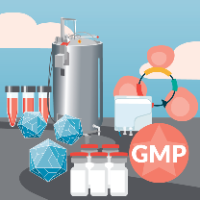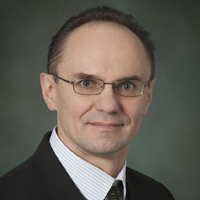How fixed bed bioreactors are changing the game for adherent cell culture-based vector production
Cell & Gene Therapy Insights 2021; 7(3), 337–343
10.18609/cgti.2021.058
Q Fixed bed bioreactors (FBRs) are proving to be a game-changer for adherent cell culture-based vector production. What benefits do they offer compared to other traditional adherent systems, and to suspension culture systems?
TU: Looking at the benefits of FBRs over traditional adherent cultures, what they typically do is take that 2D planar surface area and turn it into a more 3D surface area – even to a greater extent than things like cell stacks, which have many levels in a vertical dimension. They increase that surface area per volume ratio substantially, and that is one of the key benefits.
Another thing that they offer versus suspension systems is that they allow the cells to be immobilized. When you work with products such as viral vectors that are secreted into the liquid, it is much easier to harvest that the product when cells are immobile. This contrasts with suspension, where the particles of interest and cells are in suspension together, and you have to develop strategies to separate the two. These are probably the biggest differentiators between traditional 2D and suspension systems.
There are other benefits versus the traditional adherent system, in the way that you can monitor and control the system. For example, cell stacks are static culture systems in an incubator. With an FBR, you can monitor and control pH and oxygen, so you get better performance from the cells. That’s one benefit FBRs have in common with suspension culture systems.
VG: At the current bioprocess and manufacturing scale, as it relates to suspension cell culture systems and microcarriers, most of the biology that has been developed in the research field is performed on a traditional 2D surface. As such, there is often a big gap between laboratory scale results on the bench, and how we implement this in a manufacturing setting.
Fixed bed reactors like ours are closing that gap, because we are beginning to take the same process that has been developed in the research laboratory for the standard 2D surface and transfer it into manufacturing scale production systems. This is the goal we had in mind with the development of the Corning Ascent FBR system.
Q Can you go deeper into the results that fixed bed bioreactors such as the Ascent system can generate in terms of metrics such as cell growth, transfection efficiency, and viral titer?
VG: As we have been developing the Ascent system, we did validation against existing FBR systems. For example, we used a HEK293T cell line for AAV2 GMP production for comparison, and we found with a comparable surface area the Ascent system demonstrated about four times higher genome yield per vessel. We also saw about three times higher viral genome per square centimeter and had higher titers of viral genome per cell.
In addition, due to the design of our system, we managed to reduce media consumption by about 30%. When all of those results are taken into consideration in the cost model, it amounts to a roughly 65% reduction of viral genome cost per dose in the future manufacturing setting.
TU: I would add that these are the improvements we see when we compare the Ascent system to other FBRs. The efficiency gains are far greater against traditional 2D platforms, which other FBRs exhibit as well.
Q Could you tell us more about the specific design features and considerations aimed at optimizing yield, and ensuring vector product consistency and quality?
TU: The key to optimizing performance is the uniformity of flow and cell distribution, as it results in a very homogenous culture setting. When you have this uniform flow and distribution of cells, you are also able to harvest the cells. The Ascent system is the only FBR designed to allow retrieval and recovery of the cells from the reactors themselves.
VG: The bioreactor design provides very good uniformity in both the cell distribution as well as perfusion of distributed cells within the media. We have very uniform delivery of nutrients and oxygen, as well as uniform removal of metabolites, which greatly improves the cell yields and functionality.
What we often see in alternative fixed bed reactors that are using the fixed bed to mimic 2D adherent culture is that many cells grow in 3D clumps rather than in 2D monolayers as intended. In our case, we get this high degree of uniformity of cell distribution in the packed bed, which ensures that cells attach to the packed bed in a 2D fashion. As a result, we have increased process stability. Product yield and consistency are improved through control of specific cell confluence during the production run, which allows us to avoid 3D aggregate formations. The transfection efficiency of cells in 2D monolayers is better, leading to higher titer and yield.
Q What else differentiates Ascent from other FBRs that are on the market at the moment?
VG: Ascent was developed as a single-use, closed system that is integrated with an automated bioreactor control platform. This full integration enables a high level of automation and thus minimizes handling and is less prone to user error.
Our system design demonstrates a predictable scalability from process development, to pilot, to production units. The unique reactor design provides high uniformity of cell distribution and media perfusion in culture conditions, through the whole packed bed. It enables our systems to be used as a cell producer because the design makes it possible to perform cell harvest from the fixed bed reactor, which is not possible in alternative fixed beds. This expands the use of the system and enables it to be used in a variety of bioprocessing applications, ranging from viral vector production and vaccine production, all the way to the production of cell therapies.
Q Could you share any results to date that you have achieved with the Ascent, and any specific considerations that are important across different vector types, cell systems, and other applications beyond viral vectors?
TU: From our AAV and lentiviral vector production we have a good understanding of how the Ascent system performs. We also have proof of concept in other cellular systems including mesenchymal stem cells, again coming from that ability to harvest cells.
There are other market opportunities, such as engineered meats. We have proof of concept of fish muscle cells growing in the Ascent reactor. This is quite an enabler for that industry, as they need enormous amounts of cells, and they need to recover those cells efficiently. We look at this as a great opportunity to apply our system at the scales necessary to support that type of market. We are also looking into cells that are common for vaccine production.
Additionally, we are looking into areas such as secreted product. The Ascent reactor has the ability to have very high density of cells per unit volume, and this is one of the critical things necessary to generate high concentrations of secreted product.
Q What is your vision for the evolution of FBRs moving forward? Are there any particular aspects or applications Corning is targeting for further development?
VG: If you look into the state of the art of current FBR systems, they are functional, but they require a lot of specific knowledge and user handling to go through the whole process from beginning to end.
Users have a tendency to make errors. The vision for the future of fixed bed reactors is that it should ideally be a highly automated system that requires minimum user intervention – the user can provide cells to seed the reactor and receive cells or harvested product at the end of the process. The rest should be handled automatically by the system to minimize any user errors. Reactors should also be robust in their performance, which means stable under a variety of operation conditions during the production runs.
With the Ascent system, it was our intention from the beginning to design a system that is integrated with the controller, and the controller will make the system easy to use for the customers.
The Ascent technology has true scalability and is designed to provide a simplified workflow for customers. The principles of the technology are independent from the reactor size and can be scaled up efficiently from process development to production scale units.
TU: One of the things we want to develop is expanding the surface area intensification that FBRs have increasing the amount of surface area per unit volume. We feel confident that we have the capability to drive that to an even greater scale than our current soon to be launched product. We plan to have a scalable platform of FBRs starting as low as one square meter and reaching as high as a 1,000 square meters of surface area in a single FBR vessel.
Being able to harvest cells from the Ascent reactor makes it very scalable, and by combining that scalability with the automation previously mentioned, it can be translated to large-scale manufacturing rapidly, without many changes in the process. That should speed things up for customers looking to scale quickly, which is something a lot of customers are trying to do with these unique therapeutic modalities. Achieving speed to market is one of the most critical things customers are aiming for.
Affiliations
Todd Upton
Innovation Portfolio Senior Manager, Corning Research & Development Corporation
Vasiliy Goral
Research & Development Associate, Corning Research & Development Corporation
Authorship & Conflict of Interest
Contributions: All named authors take responsibility for the integrity of the work as a whole, and have given their approval for this version to be published.
Acknowledgements: None.
Disclosure and potential conflicts of interest: The authors are both employees of Corning Incorporated. The authors declare that they have no conflicts of interest.
Funding declaration: The authors received no financial support for the research, authorship and/or publication of this article.
Article & copyright information
Copyright: Published by Cell and Gene Therapy Insights under Creative Commons License Deed CC BY NC ND 4.0 which allows anyone to copy, distribute, and transmit the article provided it is properly attributed in the manner specified below. No commercial use without permission.
Attribution: Copyright © 2021 Corning Incorporated. Published by Cell and Gene Therapy Insights under Creative Commons License Deed CC BY NC ND 4.0.
Article source: Invited.
Interview conducted: Mar 9 2021; Publication date: Apr 26 2021.




